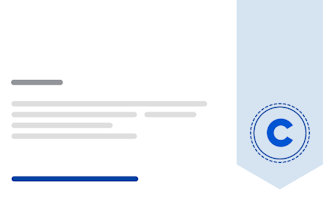What Is Sales Analytics and How Does It Benefit My Business?
March 4, 2024
Article



This course is part of multiple programs.

Instructor: Rav Ahuja
375,059 already enrolled
Included with 
(6,993 reviews)
Recommended experience
Beginner level
This course does not require any previous cloud computing or programming experience.
(6,993 reviews)
Recommended experience
Beginner level
This course does not require any previous cloud computing or programming experience.
Define cloud computing and explain essential characteristics, history, the business case for cloud, and the emerging technologies enabled by cloud
Describe the cloud service models- IaaS, PaaS, SaaS, and cloud deployment models- Public, Private, Hybrid; explain cloud infrastructure components
Explain emerging Cloud related trends including HybridMulticloud, Microservices, Serverless, Cloud Native, DevOps, and Application Modernization
List and describe services of popular cloud platforms including AWS, Microsoft Azure, Google Cloud, IBM Cloud, Alibaba Cloud, and others

Add to your LinkedIn profile
17 assignments






Add this credential to your LinkedIn profile, resume, or CV
Share it on social media and in your performance review


Start your cloud computing journey with this self-paced introductory course! Whether you need general cloud computing knowledge for school or business, or you are considering a career change, this beginner-friendly course is right for you.
In this course you’ll learn about essential characteristics of cloud computing and emerging technologies supported by cloud. You’ll explore cloud service models, including Infrastructure as a Service (IaaS), Platform as a Service (PaaS), Software as a Service (SaaS), and Public, Private, and Hybrid deployment models. Discover the offerings of prominent cloud service providers AWS, Google, IBM, Microsoft, and others, and review cloud computing case studies. Learn about cloud adoption, blockchain, analytics, and AI. You will learn about the many components of cloud computing architecture including datacenters, availability zones, virtual machines, containers, and bare metal servers. You will also familiarize yourself with different types of cloud storage options, such as Object Storage. You’ll gain foundational knowledge of emergent cloud trends and practices including Hybrid, Multicloud, Microservices, Serverless, DevOps, Cloud Native, Application Modernization, as well as learn about cloud security and monitoring. You’ll also explore cloud computing job roles and possible career paths and opportunities. You will complete a number of labs and quizzes throughout this course to increase your understanding of course content. At the end of the course, you will complete a final project where you will deploy an application to Cloud using a serverless architecture, a valuable addition to your portfolio. After this course, check out the related courses to help you towards your new career as a cloud engineer, full stack developer, DevOps engineer, cybersecurity analyst, and others.
In Module 1, in the first lesson, you will learn the definition of cloud computing and its five essential characteristics. In the next topic, you will learn about the history and evolution of cloud computing and the benefits of the pay-as-you-go feature of cloud computing. The third topic will describe the key considerations, benefits, and challenges of cloud computing. You will next discuss some common cloud service providers. In the second lesson, you will learn the need for cloud adoption by businesses. You will then discuss some case studies of businesses that benefitted from cloud adoption. In the third lesson, you will learn about emerging technologies like IoT, AI, Blockchain, and so on that leverage cloud’s scalability and processing power to provide value to individuals and businesses alike, supported by some case studies.
12 videos7 readings4 assignments1 discussion prompt
In Module 2, you will learn about the different types of service and deployment models of cloud computing. The first lesson covers the three main service models available on the cloud—Infrastructure-as-a-Service (IaaS), Platform-as-a-Service (PaaS), and Software-as-a-Service (SaaS). You will learn the differences between each model, the advantages of each, and the key components of cloud infrastructure. The second lesson goes over the four main deployment models available on the cloud—public, private, hybrid, and community. You will learn what deployment models are and the differences and advantages of each model. At the end of the module, you will create an account on IBM Cloud.
8 videos5 readings3 assignments1 app item1 plugin
In Module 3, you will learn about the various components of a cloud computing architecture, such as the virtualization of virtual machines and bare metal servers, and the difference between virtual machines and bare metal servers. You will learn the different types of virtual machines, how to build a secure cloud networking presence, how container-based technologies work, and the benefits of a Content Delivery Network. In the second lesson, we will also familiarize you with the four main types of cloud storage—Direct Attached, File, Block, and Object Storage. You will learn the differences in how they can be accessed, the capacity they offer, how much they cost, the types of data they are best suited to store, and their read-write speed.
14 videos3 readings3 assignments
In Module 4, you will learn about the use cases and challenges of emergent trends in cloud computing, such as hybrid multi-cloud, serverless computing, and microservices. Additionally, this module will teach you about the core concepts and benefits of cloud native applications, the role of DevOps in addressing some of the complexities of cloud computing, and how organizations can benefit from modernizing their applications.
7 videos4 readings3 assignments
In Module 5, you will learn about elements of cloud security, including Identity and Access Management and cloud encryption. This module will cover how organizations leverage cloud monitoring solutions to optimize business benefits. It will familiarize you with cloud adoption case studies in different industry verticals, and the various career opportunities and job roles available in the field of cloud computing today.
8 videos5 readings3 assignments
In this module, you will complete a final project to deploy a containerized application on the cloud using a serverless technology (no programming experience needed). You can also demonstrate your knowledge of cloud computing by completing an optional assessment based on a cloud architecture design case study.
1 video3 readings1 assignment1 app item1 plugin
We asked all learners to give feedback on our instructors based on the quality of their teaching style.



At IBM, we know how rapidly tech evolves and recognize the crucial need for businesses and professionals to build job-ready, hands-on skills quickly. As a market-leading tech innovator, we’re committed to helping you thrive in this dynamic landscape. Through IBM Skills Network, our expertly designed training programs in AI, software development, cybersecurity, data science, business management, and more, provide the essential skills you need to secure your first job, advance your career, or drive business success. Whether you’re upskilling yourself or your team, our courses, Specializations, and Professional Certificates build the technical expertise that ensures you, and your organization, excel in a competitive world.

Course


Illinois Tech
Course


LearnKartS
Course

Course




6,993 reviews
73.23%
20.19%
3.85%
1.22%
1.49%
Showing 3 of 6993
Reviewed on Mar 16, 2023
This course is amazing for beginners to learn about cloud computing. You will learn about public, private, and hybrid cloud computing. how to make your business efficient with cloud storage.
Reviewed on May 19, 2020
It was so so grateful being here , I loved it course so much , as it provided all the concepts very clearly , I would also recommend all other to have this course and gain knowledge provided by IBM.
Reviewed on May 28, 2022
The peer review assignments seem to be a bottle neck everyone on the forums seems to be begging to be reviewed and I am hoping I don't have to wait long before I can finish this and continue



Unlimited access to 10,000+ world-class courses, hands-on projects, and job-ready certificate programs - all included in your subscription

Earn a degree from world-class universities - 100% online

Upskill your employees to excel in the digital economy
Upon successful comnpletion of the course, you will receive an email notification from Acclaim with instructions for claiming the badge. To claim the badge, it will be necessary to create a user account on Acclaim, where you will have the ability to manage your badge(s), opt-in to other communications and features. Each badge can be shared on social media and has built-in labor insights on job openings associated with the skills you have acquired through the course. Learn more about IBM Badges
Access to lectures and assignments depends on your type of enrollment. If you take a course in audit mode, you will be able to see most course materials for free. To access graded assignments and to earn a Certificate, you will need to purchase the Certificate experience, during or after your audit. If you don't see the audit option:
The course may not offer an audit option. You can try a Free Trial instead, or apply for Financial Aid.
The course may offer 'Full Course, No Certificate' instead. This option lets you see all course materials, submit required assessments, and get a final grade. This also means that you will not be able to purchase a Certificate experience.
When you enroll in the course, you get access to all of the courses in the Certificate, and you earn a certificate when you complete the work. Your electronic Certificate will be added to your Accomplishments page - from there, you can print your Certificate or add it to your LinkedIn profile. If you only want to read and view the course content, you can audit the course for free.
If you subscribed, you get a 7-day free trial during which you can cancel at no penalty. After that, we don’t give refunds, but you can cancel your subscription at any time. See our full refund policy.